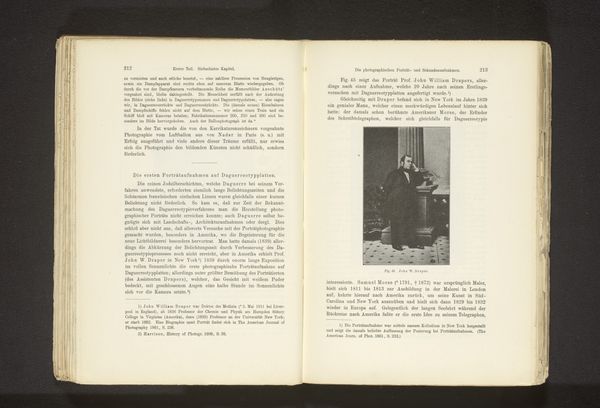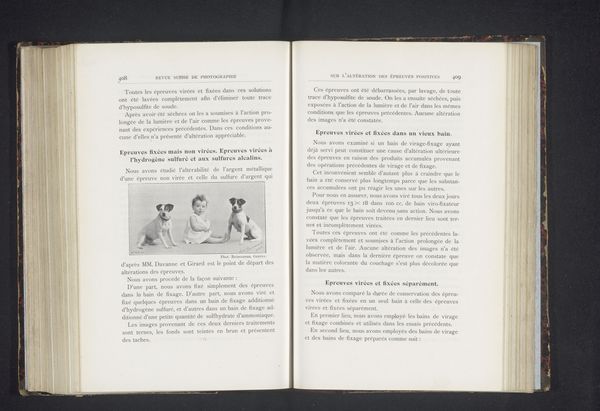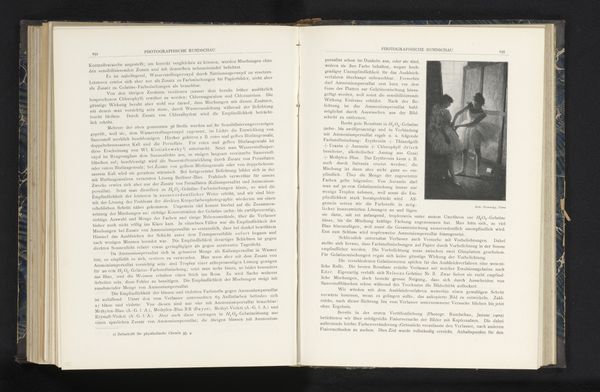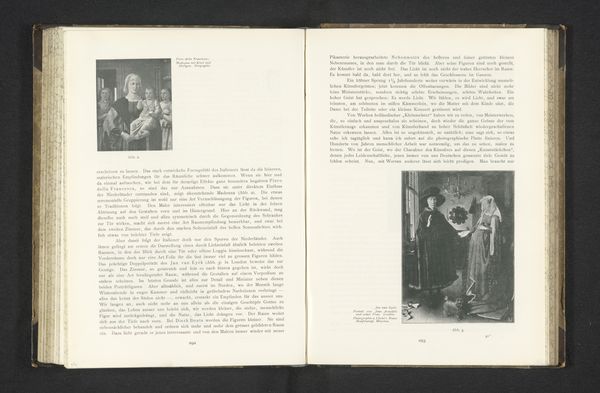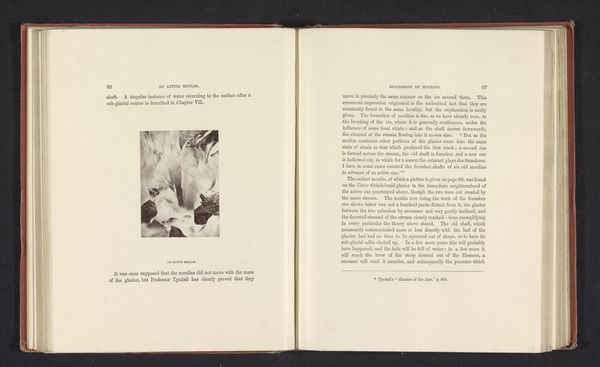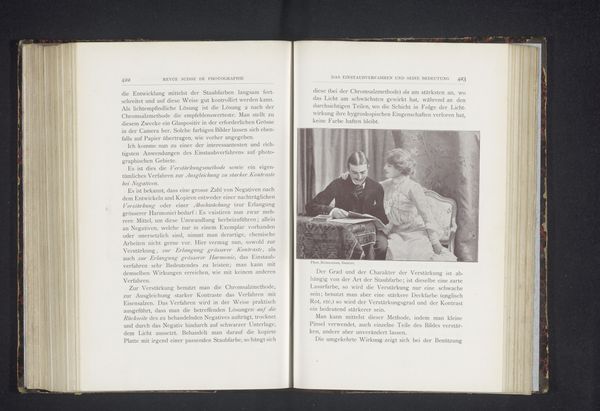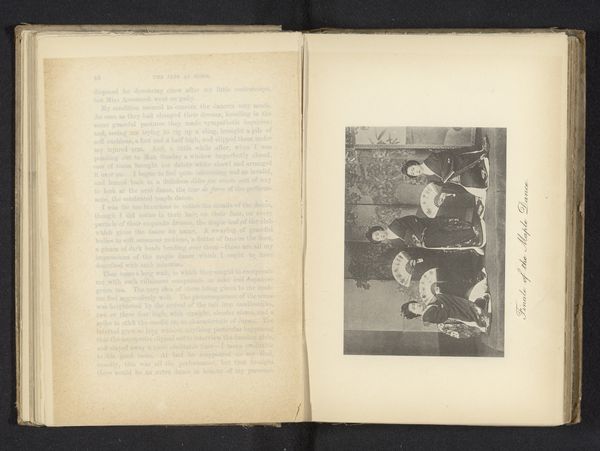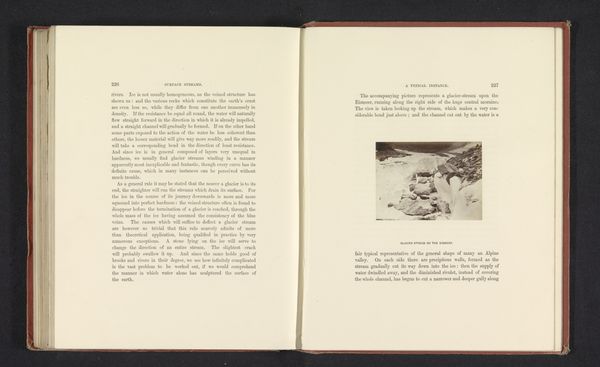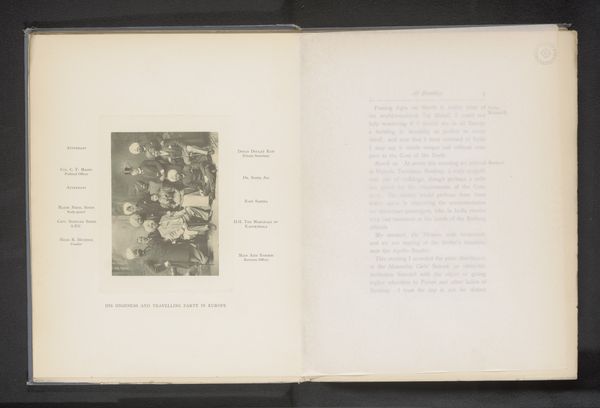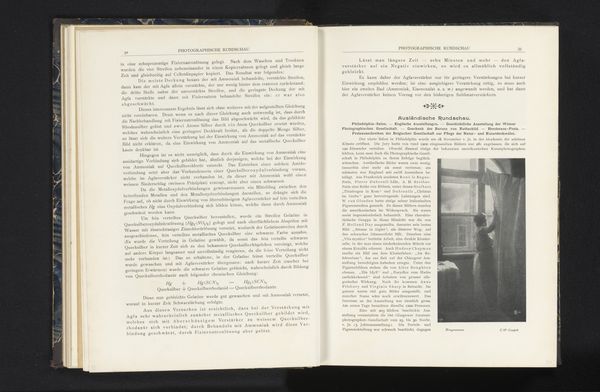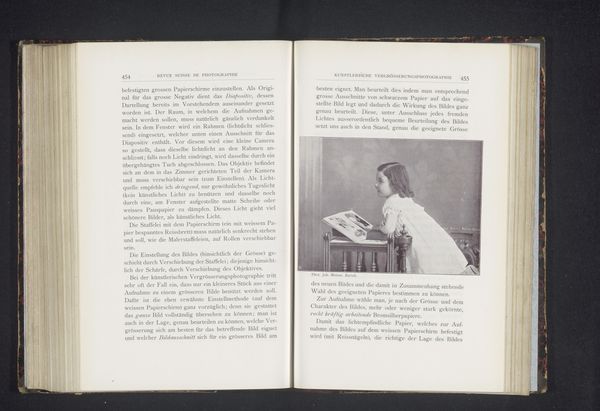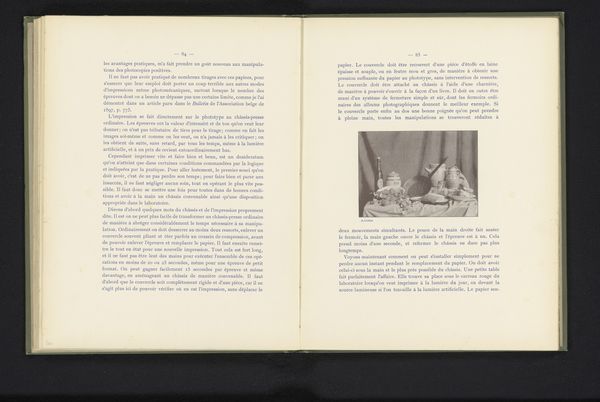
print, photography, albumen-print
#
portrait
#
still-life-photography
# print
#
photography
#
journal
#
albumen-print
#
historical font
Dimensions: height 92 mm, width 78 mm
Copyright: Rijks Museum: Open Domain
Curator: This photograph, “Flash Silhouette," is credited to H.W. Smith, dating from before 1895. The print is actually part of an open book. The text to the left and right offers, essentially, tips and notes for capturing images using what he refers to as a 'flash'. Editor: The dark silhouettes set against the brighter page feel almost ominous. Two women sit at a small table, engaged in conversation or perhaps tea, but the lack of detail renders them spectral, more like figures in a cautionary tale. Curator: That feeling aligns with the turn of the century, where shadow photography, silhouettes, were used to highlight not just form, but almost to preserve or record the ethereal idea of a loved one, right at the threshold of a new technology. Editor: Exactly. And isn't there something haunting about capturing someone’s image right as our understanding of industry and personhood began shifting drastically? Think about it; you have photography and this text providing almost archaic instructions for these techniques. In essence, it’s memorializing not just the women, but the moment itself, making them icons of a bygone era already grappling with modernity. Curator: It’s fascinating how a simple technique could evoke such strong emotional and historical layers. What's particularly curious to me is the interplay between light and dark—revealing forms while simultaneously concealing identities. This creates an effect, as you mention, where these two figures emerge as representatives. Editor: Almost archetypal in the sense of representing broader groups. It also forces us, I think, to confront how the absence of individual characteristics can become its own type of statement—particularly during this shift toward societal expectations for gender, status, identity. Curator: The technology in this photographic example allowed a form of individual creation, which seems radical given its early invention. It reveals how people wanted to perceive each other as well, using that manipulation of light as symbolic preservation. Editor: Yes! Looking at "Flash Silhouette" in its historical context encourages conversation on visibility, erasure, power, which resonate today through similar technological formats and art.
Comments
No comments
Be the first to comment and join the conversation on the ultimate creative platform.
